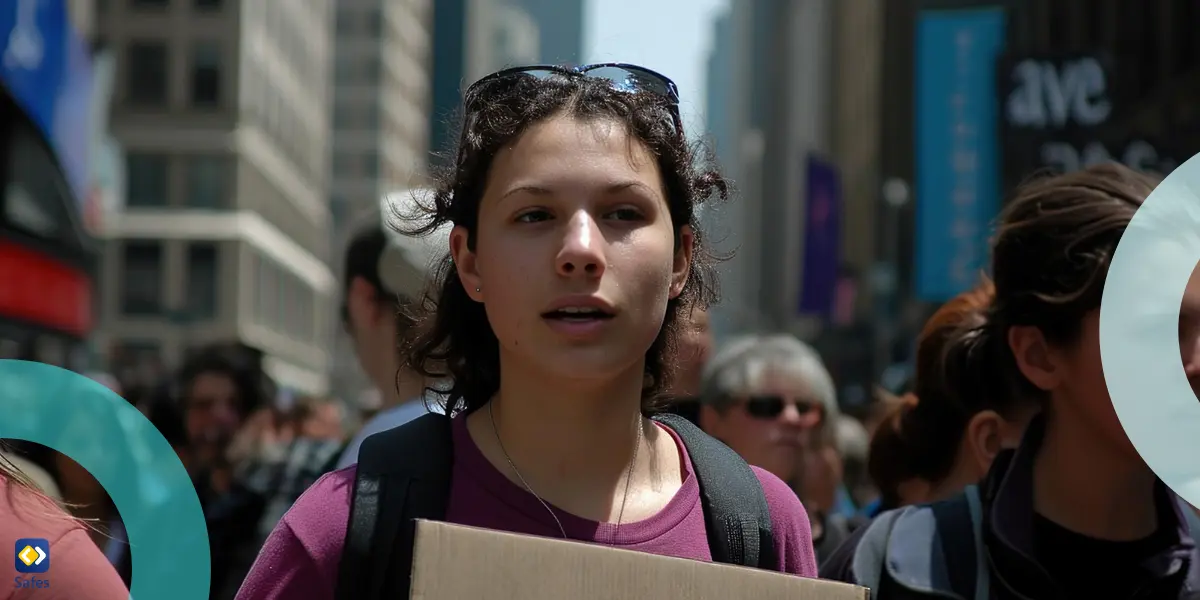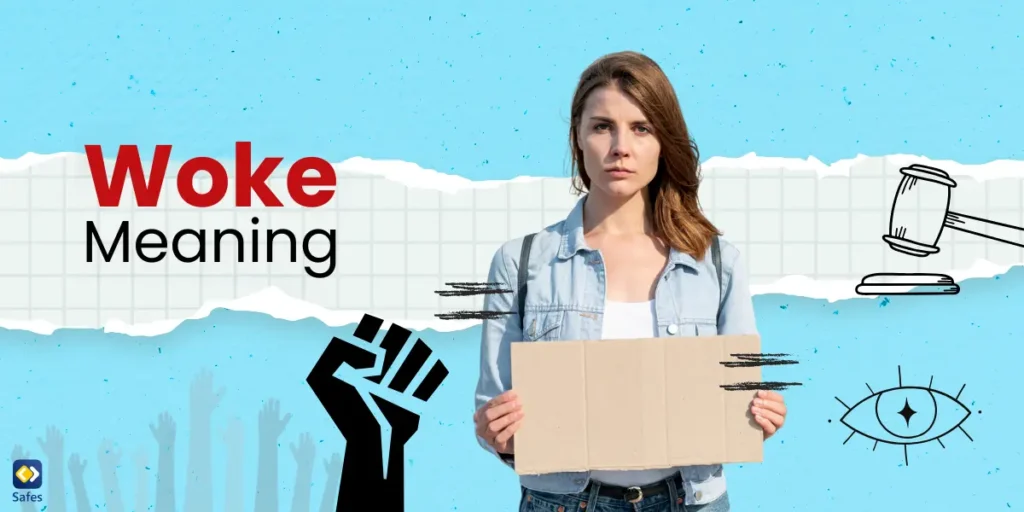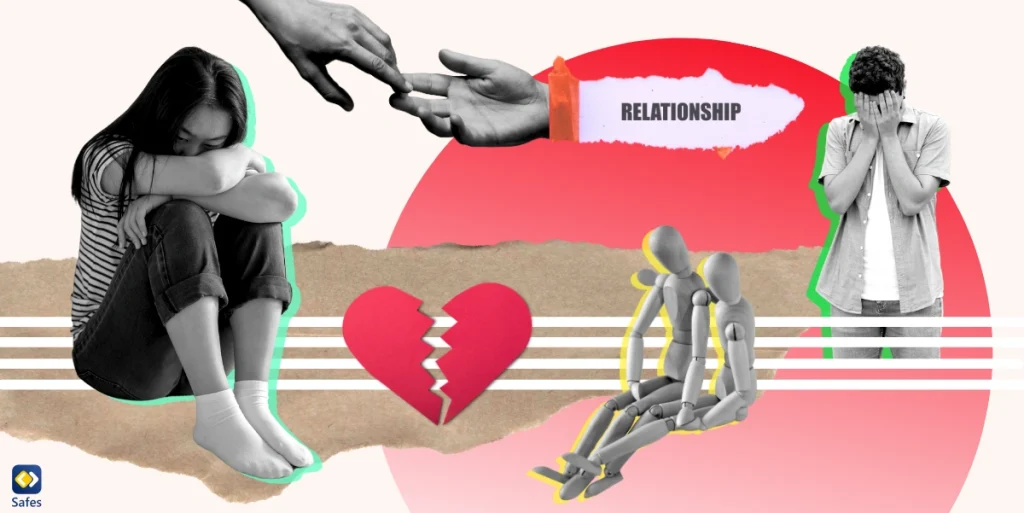If your teen has ever said someone is “so woke” or rolled their eyes at a “woke” post online, you might have paused and wondered, what does that even mean? At first glance, it might sound like they’re just talking about getting out of bed. But in today’s online world, woke has taken on a whole new life, especially in texts, memes, and social media.
Download and Start Your Free Trial of the Safes Parental Control App
In this blog, we’re breaking it all down, from what does woke mean in text, to the meaning of being woke, to how the term is used in real conversations online. We’ll also cover safety tips and conversation starters you can use to connect with your child on deeper topics like fairness, identity, and online behavior. Whether your goal is to understand the slang or use it as a doorway to more meaningful chats, you’re in the right place.
What Does Being Woke Mean in Slang?
Let’s start with the basics. “Woke” is slang that originally meant being awake to social issues, especially racism, inequality, and injustice. If someone was woke, they were seen as socially aware and informed about things that affect marginalized communities. It was a compliment, a sign that you weren’t just going through life on autopilot.
Are there any variations or alternative spellings? Not really, though you might see the phrase “stay woke” used to encourage people to remain aware of social issues. There’s also “wokeness”, which refers to the overall mindset or attitude. Sometimes people put “woke” in quotation marks to show sarcasm or skepticism, especially online.
What Does Went Woke Mean?
The phrase “went woke” usually pops up in conversations about companies, movies, or public figures. It means that something or someone has started promoting progressive social messages.
Sometimes it’s said in a positive way. Other times it’s meant to criticize or mock the change. For example, someone might say, “That brand went woke with their latest ad campaign,” suggesting they think the message is overly political or performative. It really depends on who’s using the phrase and what tone they’re going for.
What Does It Mean to Be a Woke Person?
A woke person is generally someone who is socially conscious and pays attention to issues like racism, climate change, gender equality, and other forms of injustice. They try to speak up when they see something unfair and support changes that aim to make society more inclusive.
Some people see this as a good thing and use “woke” with pride. Others use it in a negative or mocking way, especially when they think someone is being overly sensitive or making a big deal out of small things. The word has definitely become more complicated over time.

How It’s Used in Real Digital Interactions
When it comes to slang like woke, kids and teens often use it in quick, casual ways across texts, social media, and gaming chats. Sometimes it’s serious, but more often it’s playful or even sarcastic.
Here are a few examples you might see:
- Text message: “She got mad at the teacher for not using the right pronouns. She’s super woke.”
- This could be sincere or slightly teasing, depending on the relationship between the people texting.
- Instagram comment: “Woke content alert 😅”
- Used to lightly poke fun at a post that’s seen as very socially conscious or political.
- Snapchat story: “When your little brother calls out racism in a cartoon… woke king ”
- Playful and encouraging, often with a touch of humor.
- In a game chat: “Don’t go woke on us just because we picked the girl character.”
- Likely sarcastic and joking, though it can also reflect tension around identity or inclusivity in gaming spaces
In these interactions, the tone really matters. Among friends, it might be used jokingly to tease someone for being overly correct or moral. In other contexts, it could be a sincere compliment or a way to show approval.
Platform-Specific Usage
Different platforms have their own culture, and that affects how slang like woke shows up.
- TikTok: This is one of the most common places you’ll see woke and related terms. Users might use it in captions like “woke Gen Z strikes again” or in a sarcastic tone to critique a video that feels too politically correct. It’s often paired with memes or reaction videos.
- Snapchat: Since most communication here is between close friends, woke is more likely to be used in a teasing or inside-joke kind of way. Think quick snaps with captions like “Woke vibes only” or “Too woke for this class.”
- Discord: In group chats, especially around gaming or fandoms, woke might be tossed around more ironically. For example, “This server went woke when we banned offensive jokes”. It can sometimes spark debates depending on the crowd.
- Instagram: Posts or reels about activism might attract comments like “so woke” either as support or mockery. The tone depends a lot on the audience.
- Gaming chats (like in Roblox, Fortnite, or Minecraft): Players might say something like “That NPC is woke now?” in a joking way, especially if the game adds more inclusive characters or dialogue. In some cases, it’s meant to be funny, but it can also reflect pushback against change.
Risk Level Indicator (Parent Alert System)
🟡 Yellow – Context matters; can be misused.
The slang term woke isn’t dangerous on its own, but it can be misused or misunderstood depending on how and where it’s used. Kids might say it playfully, but it can also turn into a way to mock or dismiss serious topics like racism or gender identity. In some online spaces, calling something woke is a way to shut down conversations or start arguments. If you see your child using the word, it’s a good chance to ask what they mean by it and talk about why tone and context are important, especially online.
Trend Tracker: Is It Still Relevant?
📉 Fading – Was big, but is declining.
As of April 2025, the slang woke is still used, but it’s definitely not at its peak. Teens and younger users have started moving on to newer terms, and woke is now more commonly heard in political debates or adult conversations than in everyday teen slang. On platforms like TikTok and Discord, it still pops up, often used sarcastically or in memes, but it’s not the go-to word anymore. Younger users are more likely to use fresher slang that feels less overused or politicized.
![]()
Online Safety Considerations
While woke itself isn’t a dangerous term, it can show up in conversations that lead to more heated or divisive topics. Sometimes it’s used to mock others, push back against inclusive ideas, or stir up arguments, especially in group chats, comment sections, or gaming platforms. In certain online spaces, the term can be tied to political trolling or toxic behavior.
Can Parental Controls Help?
Yes, parental controls can be a smart tool to help guide your child’s online experience. iPhone’s built-in parental controls let you manage screen time, block explicit content, and monitor app usage. For families with multiple devices or platforms, the Safes parental control app is a great option. It’s available on both iOS and Android and lets you monitor activity, set time limits, and receive alerts across your child’s devices. While no tool replaces open conversations, controls like these give you a supportive way to stay informed and step in when necessary.
Conversation Starters: Going Beyond the Slang
If your child is using the word woke or hearing it from friends or online, it’s a great opportunity to talk about the deeper issues behind the term. These don’t need to be big, formal talks. A casual conversation at dinner or during a car ride can be the perfect time to ask open-ended questions that encourage critical thinking and empathy.
Here are some conversation starters you can use:
- “What do people your age mean when they say someone is woke?”
- This gives you insight into how your child and their peers are using the word, without jumping to conclusions.
- “Have you ever seen someone get teased for speaking up about a serious issue?”
- A gentle way to explore how social pressure works, especially around things like activism or identity.
- “What are your thoughts on fairness and equality in school or online?”
- This opens the door to talk about racism, sexism, and other forms of bias in a way that connects to their real-life experiences.
- “Do you think some people pretend to care about causes just to look good online?”
- A great question to help them think critically about performative activism and how social media affects real conversations.
- “Have you ever felt unsure about speaking up or staying quiet when someone said something offensive?”
- This helps them reflect on peer pressure, courage, and how to handle tricky situations with friends.
- “How do you feel about seeing politics in shows, games, or online content?”
- A calm way to explore how media and entertainment are changing, and how your child feels about it.
The goal here isn’t to quiz or lecture your child, but to build trust. If you show you’re open to hearing their perspective, they’ll be more likely to come to you when something confusing or uncomfortable comes up.
Conclusion
Woke might seem like just another buzzword, but it can be a valuable gateway to meaningful conversations about fairness, identity, and how your child navigates the digital world. Whether it’s used sincerely or sarcastically, woke meaning in slang often reflects deeper beliefs about society and understanding how your child sees and uses the term can give you a window into their values and the online culture they’re part of. By staying curious, asking thoughtful questions, and using tools like parental controls when needed, you can support your child in thinking critically, staying safe, and growing into a thoughtful digital citizen.
Your Child’s Online Safety Starts Here
Every parent today needs a solution to manage screen time and keep their child safe online.
Without the right tools, digital risks and excessive screen time can impact children's well-being. Safes helps parents set healthy boundaries, monitor activity, and protect kids from online dangers—all with an easy-to-use app.
Take control of your child’s digital world. Learn more about Safes or download the app to start your free trial today!




